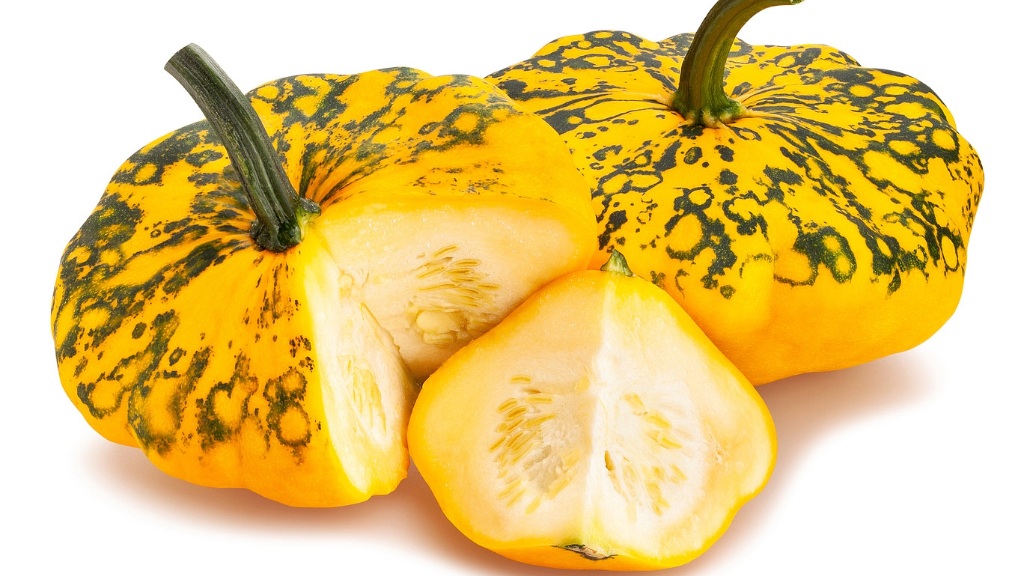Growing Variegated Scallop Squash


The beauty of the vegetable garden is a balm to the soul and a helpmate to the pocketbook. There is no better bang for the buck than the squash crop - one of my all-time favorites. Squash plants produce at a rapid-fire rate once they have established and provide so many fruits that the single- or small-family gardener may be giving them away all season long. Patty pans, or scallop squash, look a bit like architectural renditions of flying saucers. The Jaune et Verte squash is a French heirloom scallop with a creamy flesh and lovely variegated shell.
About Jaune et Verte Squash
It's always fun to learn more about plants when growing them, and Cucurbita pepo 'Jaune et Verte' has a special place in scallop squash heirloom history. Jaune et Verte refers to the coloring of the squash, with its yellow to ivory rind vicariously striped with green accents. Also known as Pattison Panache, this scallop produces prolifically and quickly, having early edibility or tasty maturity. Just don't leave them on the vine too long, as they can get a bit woody on the outside and fibrous on the inside. The earliest depictions of patty pans were in a botanical book in 1591. Native Americans counted the squash an important part of their diet, and Europeans have cultivated the plant for a couple of centuries. I simply love the curious, otherworldly nature of the plant's fruit - Of course, they taste wonderful too!
Growing Variegated Scallop Squash Jaune et Verte
It is essential to preserve any old species, and keeping some of this scallop squash heirloom history going for future gardeners and the like is no different. Growing variegated scallop squash enhances diversity in food crops and saves a species from extinction. Seed savers such as myself know the value of finding a good variety and keeping the seed for year after year excellence. And, of course, no history would be complete without the inclusion of growing info. Patty pan squash plants practically grow themselves. Direct sow them after all danger of frost has passed. Provide organic rich soil and plenty of water in a full sun location and you should have more of the fruits than you can handle. Chewing pests are a problem, as are some mildews and fungal diseases. These are easy enough to handle with a little slug bait, organic pesticides and by watering at the base of the plant. Squash will form after 60 to 70 days. Harvest the little guys when white for stir fries or just fresh eating. Wait until the variegation appears and pick the 4- to 6-inch fruit for stuffing, sautéing, frying and other recipes. Look for this interesting little squash in reputable heirloom supply catalogs and try your hand at growing it. You won't be sorry! In fact, you'll likely find yourself wanting more of these delightful fruits with each passing year - much like myself!
Gardening tips, videos, info and more delivered right to your inbox!
Sign up for the Gardening Know How newsletter today and receive a free copy of our e-book "How to Grow Delicious Tomatoes".
-
 8 Perfect Flowers To Plant With Tomatoes To Boost Yields & Banish Pests
8 Perfect Flowers To Plant With Tomatoes To Boost Yields & Banish PestsDon’t forget flowers when choosing companion plants for your tomato beds or pots. These pretty, fragrant flowers add beauty but are also highly beneficial.
By Mary Ellen Ellis
-
 Want The Longest Lasting Hydrangea Flowers? Grow These 8 Panicle Hydrangea Varieties
Want The Longest Lasting Hydrangea Flowers? Grow These 8 Panicle Hydrangea VarietiesFor ornamental shrubs that deliver the longest flowering seasons with plush blooms and delicate hues, these panicle hydrangea varieties are essential in your yard
By Tonya Barnett